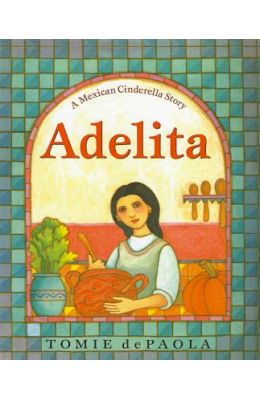

He perfectly enhances the familiar concepts of a Cinderella tale with culturally relevant details, such as the foods they eat (beans and tortillas) and the way they speak, using many Spanish phrases. While as the reader we can pick up the essence of Mexican culture from only the text, but it is the brightly colored images, framed by vivid and detailed tile work that help to truly engulf the story into one of cultural significance.ĭePoala's version of Cinderella serves as a great tribute to traditional Mexican culture and to the worldwide use of fairytales.

In each framed scene the reader can see the Mexican food being used in the kitchen, the traditional cultural dress, Mexican architecture, and many other elements unique to the country. The full page tile framing style that dePoala uses help bring attention to the scenes being illustrated and the the text in the white backgrounds, without sacrificing color or cultural relevance.

The illustrations in the book are invaluable when it comes to depicting traditional Mexican culture.

The two realize their instantaneous love is fate and in the style of all great fairytales, live happily ever after. The same shaw that she uses to prove her identity the very next day when Javier comes looking for the gorgeous girl from his party. In typical Cinderella fashion, Adelita makes quite the impression at the party, draped in her late mother's flowing red shaw. We have Adelita's childhood house keeper, Esperanza, taking on the role of the fairy-godmother who makes sure she looks beautiful when she goes to the to the fiesta thrown by Señor Javier, our eligible bachelor. Following her father's death, Adelita is left to live with her hateful stepmother and unbearable stepsisters. While it is very clear that the story tells the tale of a girl from Mexico, we see still get the Cinderella plot we are looking for. This story infuses the traditional children's fairytale with a Mexican twist that can be seen from the isolated Spanish phrases (translated within the text to English for the reader), to the warm colored tile work framing all the text and illustrations on every page. "Adelita: A Mexican Cinderella Story" by Tomie dePoala is not your typical glass slipper, pumpkin coach, fairy godmother kind of Cinderella.


 0 kommentar(er)
0 kommentar(er)
